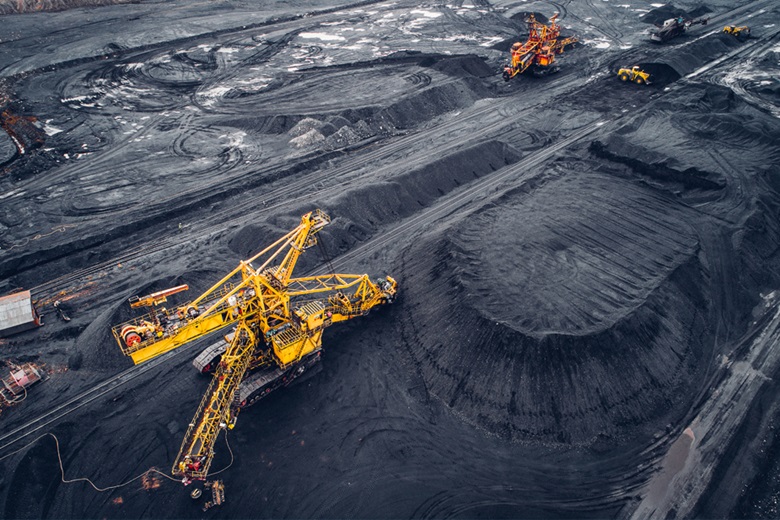Opening Remarks at APEC Ministers Responsible for Mining Meeting

Speech delivered by Ambassador Muhamad Noor, Executive Director of the APEC Secretariat, at the APEC Ministers Responsible for Mining Meeting in St Petersburg, Russia.
Introduction
Ministers, excellencies, ladies and gentlemen—good morning. I am pleased to be here together with you all and to have the privilege to offer a few remarks on some recent developments in mining and how APEC has made progress in this crucial sector.
It is fitting that we are gathered here in St. Petersburg given its longstanding reputation as a mining research hub. The city is, after all, home to the prestigious St. Petersburg State Mining Institute, which has been helping to drive innovation since it was founded by Catherine the Great in 1773.
Today, some 239 years later, it is hard to overstate mining’s importance to our modern, 21st century global economy and to APEC‘s’ prosperity, in particular.
Mining Statistics in Context
Worldwide, metal and mineral exports grew from a trillion dollars in 1996 to more than US$3 trillion in 2010 on 12.6 percent average growth, well above the 7.9 percent average growth of all other exports during the same period.[1]
The APEC region is the primary catalyst and beneficiary of this trade.
APEC economies sit on the largest metal and mineral reserves, globally, account for 70 percent of total production and are the sector’s biggest exporters.[2]
On the other hand, APEC economies together account for 60 percent of consumption in minerals and metals.
Mining resources, production, processing and trade are therefore providing a significant contribution to the economies of the region, driving growth and delivering jobs across the APEC.
For its part, Russia, our host, is the world’s leading producer of chromium, nickel and palladium, possesses the largest iron ore reserves as well as 20 percent of all coal, and is the second largest producer of aluminium, platinum and zirconium.[3]
Collectively, mining and metallurgy account for almost 20 percent of Russia’s industrial output, and minerals further account for 15 percent of the economy’s total exports.[4]
Effects of Global Uncertainty
To be sure, mining is not immune to the effects of the global economic uncertainty that we have been experiencing in recent times.
After rebounding in 2009 from the shock of the financial crisis, prices of many mineral commodities are once again easing from their peaks as a result of renewed economic concerns.
Metal prices have declined thus 21.1 percent over the last year and 4.1 percent just over the last month.[5]
Building Mining Sustainability
It is against this backdrop that APEC economies are working together to constructively address mining-related issues.
The establishment of the APEC Mining Task Force in 2007 and policy direction offered by APEC Ministers Responsible for Mining in Perth that year laid a solid foundation for member economies to seek ways to cooperatively build greater sustainability within the sector.
This year, with Russia as host, APEC is making considerable progress toward this end and, by extension, advancing APEC’s priorities for 2012 which include strengthening trade and investment, regional economic integration, food security, supply chains connectivity and innovative growth.
Notably, APEC economies are moving forward with the implementation of the Ten APEC Mining Policy Principles which are helping to break down barriers to expanded trade and investment in minerals and mining, promote mining best practice, monitor progress and build capacity.
An inclusive approach is aiding this process, with significant steps being taken to reach out to mining’s stakeholders and provide them with an opportunity to lend their respective inputs.
APEC economies are continuing to jointly work on the creation of a corporate social responsibility training program that includes the production of mining-specific guidelines to bolster industry efficiency, transparency and accountability, in coordination with local governments, businesses and civil society groups.
Active dialogue has meanwhile been helping to facilitate information sharing and improve policy harmonization, including in regard to the European Union’s classification of chemical substances and nickel alloys with its potential socio-economic implications.
APEC economies are furthermore considering the effects of the International Maritime Organization and other bodies’ regulation of solid bulk cargoes and ways to boost supply chain connectivity so that it is both conducive to business and takes into consideration the need to properly handle materials that are potentially hazardous to the environment.
In keeping with APEC’s sustainability focus, member economies and related stakeholders remain committed to the advancement of measures that support integrated, environmentally-conscious industry growth and forward-thinking resource management.
Among them include consideration of initiatives that encourage smart, value-adding investment, the exchange of innovative ideas and technologies, and support for downstream mining sector infrastructure development.
There is still much more to be done, but we should be encouraged by the concrete actions that are being pursued.
By continuing to collaboratively pursue initiatives that enhance the effectiveness and sustainability of the mining sector and further APEC’s 2012 priorities, member economies are helping to generate greater prosperity in the region and bring significant benefits for mining stakeholders.
I thank you very much for your attention and look forward to a productive exchange.
[1]Mineral exports grew from US$ 1.06 trillion in 1996 to US$3.11 trillion in 2010; Data provided courtesy of PECC, June 2012
[2] Data sourced from Rusmet
[3] http://www.infomine.com/countries/russia.asp; APEC Mining Task Force report, December 2010
[5] The Economist—Print Edition, Commodity Price Index, 16 June 2012

